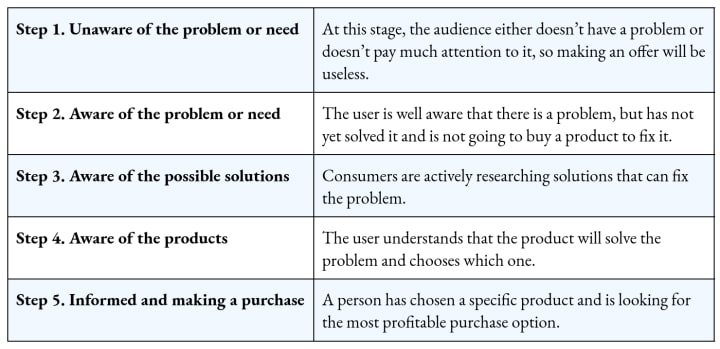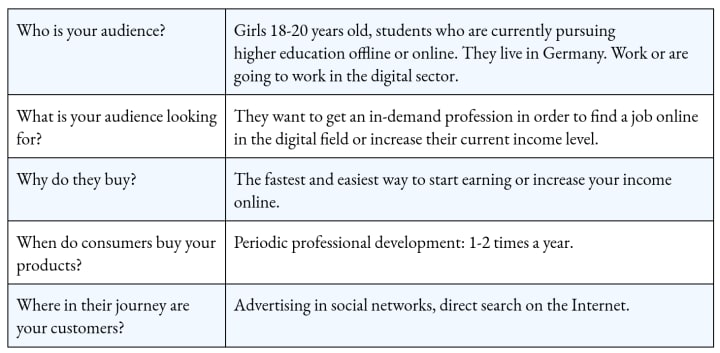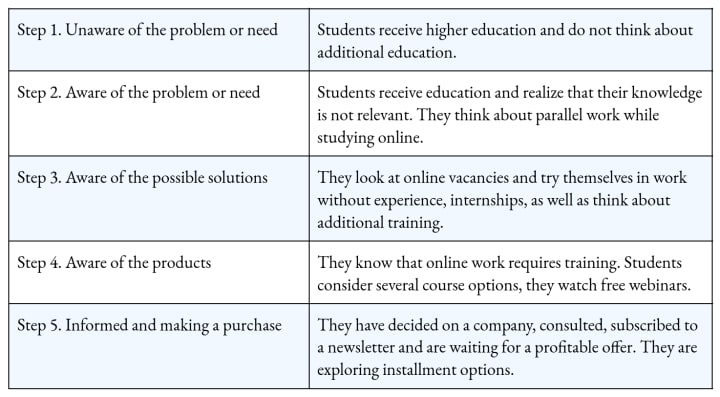
Business audiences are rarely uniform, especially if it is an audience of many thousands. Customers differ in age, buying methods, and interests, so making the same offer for everyone is inefficient. Segmentation of the target audience (dividing into groups) is a step towards personalization, insights for the development of new products and services, as well as the success of advertising campaigns that become more targeted.
A business gets 77% ROI and increased customer loyalty with proper segmentation. In the post we will describe the benefits of splitting clients into groups, as well as by what criteria and how to segment the audience.
What is target audience segmentation
Target audience segmentation is the distribution of current and potential customers into groups (segments) according to certain similar characteristics. Users fall into segments by age, gender, personal, socio-economic and other characteristics.
Why does your business need customer segmentation
- Increasing loyalty. The more detailed the company defines segments, the better it understands the needs of customers and more effectively personalizes offers. Users get a positive experience and give high rates to the brand.
- Effective advertising campaigns. Audience segmentation shows the pains of the target audience and removes the random effect when advertising is set up for everyone at once in order to hit at least some customer preferences. Promotion goes faster with clear segments because the business offers the right product to the interested audience.
- Reducing marketing costs. Audience segmentation is beneficial because there are no extra costs for testing, fewer errors in setting up campaigns. Thus, the business saves the marketing budget.
- Increasing profits as a result of offering the right product at the right time to a ready-to-buy customer.
- Product improvement. When you understand the segments, it is easier for you to tailor the product to the interests and needs of the audience.
- Insights for development strategy. Segmentation is a detailed definition of the target audience. In the process of customer research, the company often receives unexpected conclusions about their interests and understands what development options are. For example, one target segment buys with the same frequency, and the other only during discounts. In this case, you should consider whether it is necessary to spend the company's resources on additional mailings (which are not free), if it is enough to send just a promotional code.
- Increasing competitiveness. The one who knows the audience segments better, determines their needs faster and accurately "hits the target", while the rest of the companies act at random.
- Choice of communication channels. Segments will not necessarily be users of the same social network, and then marketers will have to add new promotion channels after segmentation.
How to segment your customers
Segmentation steps
- Goal setting and hypotheses. Decide what result you want to get / what needs to be revealed as a result of segmentation.
- Define segmentation criteria.
- Divide the audience into segments based on the data collected from analytics.
- Analyze the received segments and draw conclusions. Determine what you can offer to each group of customers.
- Write a strategy and action plan for the groups. At this step, the company decides with which segments and how to work: perhaps some should be prioritized, while others should be completely removed.
Types of segmentation
Here are the criteria for defining segments:
- Socio-demographic. Demographic data includes statistical information, like a person's age, income, gender, education, etc.
- Geographic. Includes the client's place of residence: country, region, locality. It is also important to consider the characteristics of the place: climate, natural disasters.
- Behavioral. How often and in what way the client buys, readiness to buy, feedback and ratings for products, behavior on the website.
- Psychographic. This can include personality variables like ways of self-expression, values, sociability, attitude to the new, lifestyles, attitudes, likes, and dislikes.
Here are other segmentation criteria:
- Business criteria. Describes the income, size, industry of the company (for B2B).
- Generation theories. Baby Boomers, Generations X, Y, Z, and Alpha.
- Life stage. For example, having a child, getting married, graduating from university.
- Seasonal activity. When purchases are made during a certain period. For example, buyers choose seeds before the summer season.
Ben Hunt's Customer Awareness Ladder
The idea behind the model is that a customer comes to a purchase through five consecutive steps.

The 5 Ws of audience segmentation

It is much more efficient to combine different criteria and segmentation methods, rather than one. There is no universal set of characteristics for segments, so each business chooses the best for itself. Think right away what a segment is for your business.What is the size of each group, how detailed you describe it, and on the basis of what characteristics do you divide the audience.
Data sources for audience segmentation:
- surveys on the website and in social networks;
- email database;
- analytics systems;
- social media statistics;
- feedback analysis.
How to evaluate segmentation results
First, we check the segments for:
- Stability. Groups should remain unchanged for the next few years (according to forecasts);
- The possibility of communication. The audience is available in one or more channels;
- Uniformity. Within the group, customers are as similar as possible and very different from other segments.
Also, the result of proper segmentation is the growth of marketing KPIs: clicks on links in content and advertising, conversion rates and sales.
What awaits a business without segmentation
Incorrect audience definition results in wasted advertising campaigns and, possibly, minimal effect from them. If you show all customers the same offer, only some will respond, and the rest will not buy. It can take a long time to test options for ads without segmentation, and each attempt is an additional expense that is not always paid off.
Without segmentation, personalization is also impossible. The group of customers whose interests are "not hit" will turn out to be less loyal, and the business will lose potential income.
Examples of segmentation
Let's do an audience segmentation for an online learning platform that offers courses in digital professions. For example, we need to define the target audience for selling a course on Internet marketing.

The 5 Ws of audience segmentation

Ben Hunt's Customer Awareness Ladder

Summary
Target audience segmentation is a grouping of customers according to similar characteristics: gender, age, interests, frequency of purchases, readiness to place an order, and others. The division into segments gives ideas for business development and increases loyalty, competitiveness, and the effectiveness of advertising campaigns.
Usually the audience is segmented according to socio-demographic, geographic, behavioral, and psychographic characteristics. But it is also possible to use alternative approaches or combine several methods. For example, there are such methods as Ben Hunt's Customer Awareness Ladder or a 5W model. Without dividing customers into groups, the business works blindly and loses money on testing advertising campaigns. It cannot personalize the offer. However, proper segmentation saves the marketing budget and leads to an increase in marketing performance and sales.
The article was originally published here.
About the Creator
Altcraft
Interesting and useful articles about marketing, our product and online communications






Comments
There are no comments for this story
Be the first to respond and start the conversation.